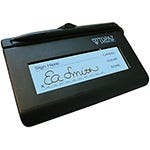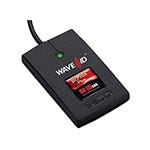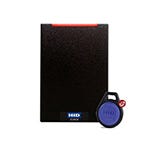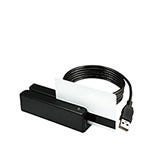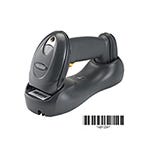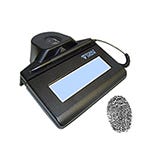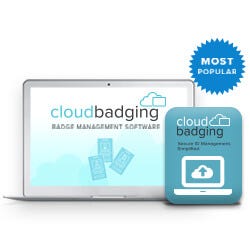- Category
Data Capture Devices & Card Readers
Data capture devices are used to add information to cards or to read/scan information already stored on them. We offer a range of data capture products, including signature capture pads, proximity card readers, handheld and wireless barcode scanners, magnetic stripe card readers, and smart card readers. These devices are commonly used for identification authentication, access control, attendance tracking, inventory tracking, point-of-sale transactions, and more.
VALUPROX
Proximity ID Cards
✓ Faster order fulfillment
✓ Significant cost savings up to 23%!
✓ Superior quality control
Shop Best Selling Data Capture


Item#: T-S460
$98.00 $97.00
You Save: $1.00
- Touchpad with stylus
- Signature on computer
- Windows 7 & 10 compatible
- 1 year warranty


Item#: RDR-80581AKU
$189.00 $179.00
You Save: $10.00
- Easy to install
- Reads 13.56MHz smart cards
- Contactless
- 2-year warranty


Item#: R50220318-DB
$60.00 $57.00
You Save: $3.00
- Quantity: 250
- Adhesive backed w/ clip hole
- Dymo 30857 comparable
- Compatible with select Dymo, Zebra & Godex label printers


Item#: T-LBK460
$280.00 $265.00
You Save: $15.00
- Touchpad with stylus
- Backlit, LCD
- Windows 7 Compatible
- Signature on LCD & computer
Expert Tips & Advice
Data Capture Devices 101
Photo identification cards have progressively become more sophisticated over the years. What used to serve solely as visual identification has been transformed by many businesses and organizations who now use their ID cards to capture data quickly and efficiently.
Businesses, schools and organizations can keep the data embedded in their ID cards and badges very simple or extremely more complex – all depending on what data they want and how they prefer to capture it.
You might ask yourself “What data would I want to capture, and how can I use it?” First things first: let’s tackle the types or forms of data you can capture.
Some of the most common forms would include:
barcodes
magnetic stripe (also referred to as “magstripe”)
signatures
RFID (Radio Frequency Identification)
smart card technologies
How can I use the data on my ID card?
Schools might use the barcode technology for checking out books in the library or for their cafeteria lunch programs.
Membership organizations might utilize the magnetic stripe technology for tracking usage of membership benefits.
In many cases, more than one type of technology is used for capturing different bits of data for different uses. For example, a business may utilize RFID for their access control system; smart card technology for retrieving biometric data like fingerprints to further authenticate access, as well as using a magnetic stripe for accessing equipment like printers and copiers and barcodes for time and attendance or productivity measures.
How can I capture the ID card data?
Common data capture devices would include the following:
barcode scanners
magnetic stripe readers
signature capture pads
proximity card readers
smart card readers
fingerprint scanners
These devices are easy to install and integrate seamlessly with the vast majority of ID software programs available on the market today.
Some devices like the E-Seek Barcode and Magnetic Stripe Reader and the Topaz IDLite Fingerprint Scanner and Signature Capture Pad allow you to capture multiple types of data as their names suggest.
The data retrieved provides a blueprint to quickly understanding more about your employees, members or students and use the information to propel your organization further.
+ Read more
How Do I Know Which Card Reader to Buy?
There are basically two types of card readers:
- Readers for door access/access control
- Readers for everything else
Card readers work on different frequencies, and the most popular type of reader right now is the 125kHz, with the 13.56MHz models coming in a close second. If you’re not familiar with card reader frequencies, think of them as different languages. A card reader needs to speak a card’s “language” (or frequency) to understand what the card is trying to say.
Door readers are pretty straightforward. They are installed on a wall or other stationary object and need to be hardwired to a control panel (it’s best to contact a local access control company to install these for you). If you don’t already have it in place, you would need to look into a control panel and access system at that time.
Once installed, cards and card readers can be used together to unlock your electronic doors. Most of the time, your cards have already been programmed from the manufacturer, but in the event you need to encode a smart card, you will want to look into an ID card printer and software combination to help you with this process. There are a few other moving parts, but let’s keep it simple for now.
There are many other types of card readers used to connect to various devices, like connecting to computers for security access or copiers to “unlock” them so you can make copies. Card readers can also be used to check visitors in and out or to check out assets like books at a library or tools in a service department.
What you use the card readers for will be up to you, but why not maximize the use of the card you’re already using to tie the card into other areas of your office or place of business? Readers like the HID OMNIKEY Contactless Smart Card Reader or the pcProx Plus Enroll Prox Card Reader are the most versatile.
The pieces you will need are few, and once in place, they can really help you turn your technology into an all-around utility item that integrates into the very pulse of how your organization operates.
What is a Signature Capture Pad?
A signature capture pad is a device that electronically captures a person’s handwritten signature on an LCD touchpad using a pen-type stylus. As a user digitally “signs” a data capture’s LCD touchpad, a sensor “reads” the pressure from the tip of the stylus, transmitting signature data to a computer.
The LCD touchpads on several of the signature capture pad models we carry offer a backlit feature. It allows a user to see “electronic ink” under the pen tip as it is signed as well as navigate between data screens to read agreements and select options for a given transaction.
Once captured, digital signatures can be imported into and used with most ID software and security programs. Signatures can also be digitally stored for future use.
For an added layer of security, a number of signature capture pad models also include a fingerprint capture sensor, like the Topaz IDGem LCD Biometric Signature Capture Terminal or the Topaz IDLite LCD Fingerprint Scanner & Signature Capture Pad.
WHAT ARE THE MOST COMMON USES FOR SIGNATURE CAPTURE PADS?
Replacing signed paper documentation with a streamlined electronic signature process using a signature capture pad allows organizations to improve efficiencies as well as save considerable time, resources, and money.
These devices are most commonly used by retail stores, financial institutions, government entities, and insurance agencies. They are used for a wide variety of applications, including:
- adding a signature to an ID card
- signing forms, contracts, or other paperwork
- signing receipts
HOW DO I KNOW WHICH SIGNATURE CAPTURE PAD SHOULD I BUY?
The signature capture pad you purchase will depend upon how to you intend to use it to digitally capture signatures. When purchasing a signature capture pad, the frequency of use and the environment it will be in should be considered.
If the application requires a high volume of exposure or multiple screens to navigate with data, a more rugged model with a larger LCD pad or screen would be the optimal choice, providing added device longevity and reliability.
In addition, we suggest purchasing a signature capture pad with a backlit LCD panel. This provides a clear display of the electronic ink under the pen’s tip as the user signs. The backlit feature enables users to clearly see the LCD screen in any type of lighting condition.

Filter By
Shopping Options


